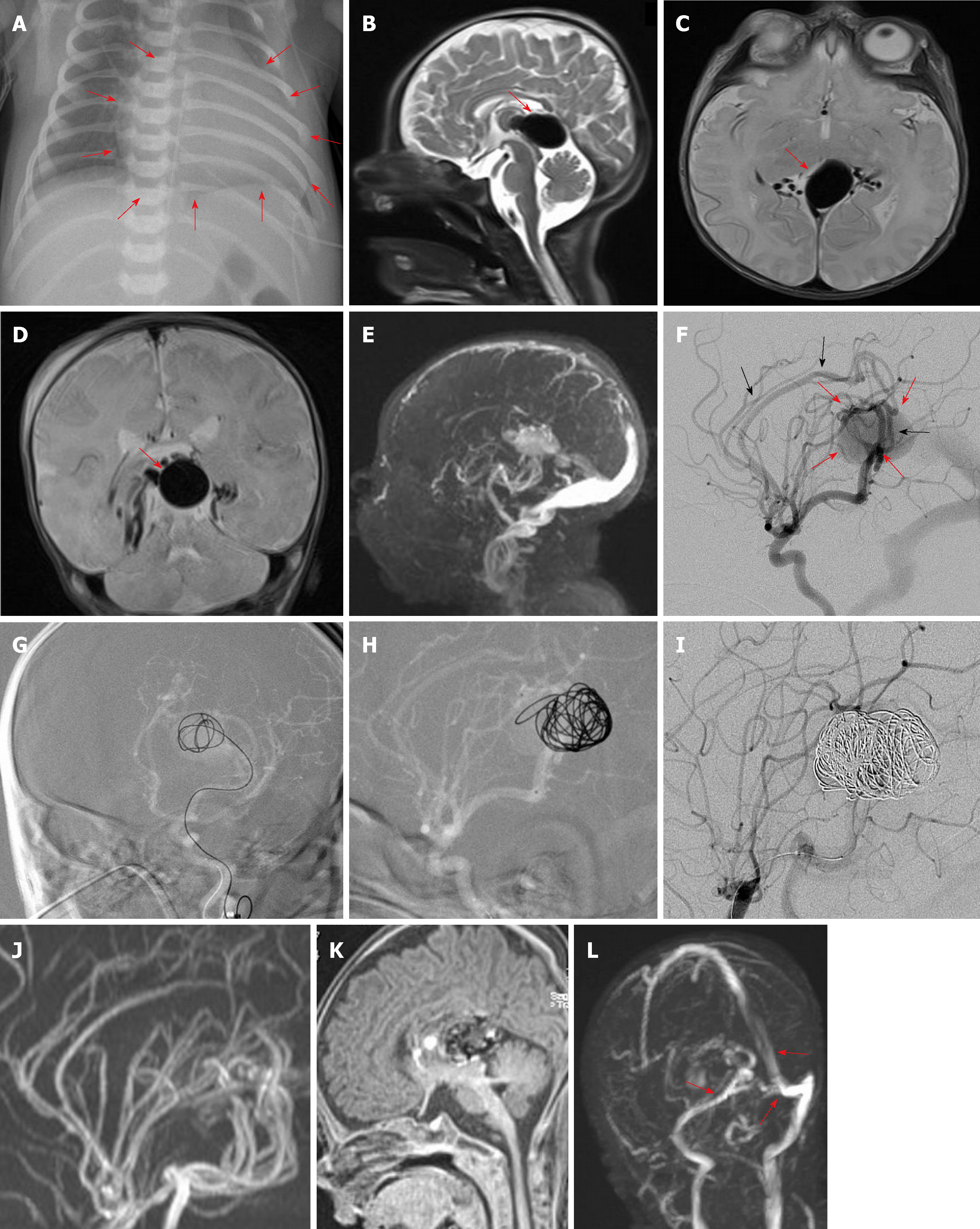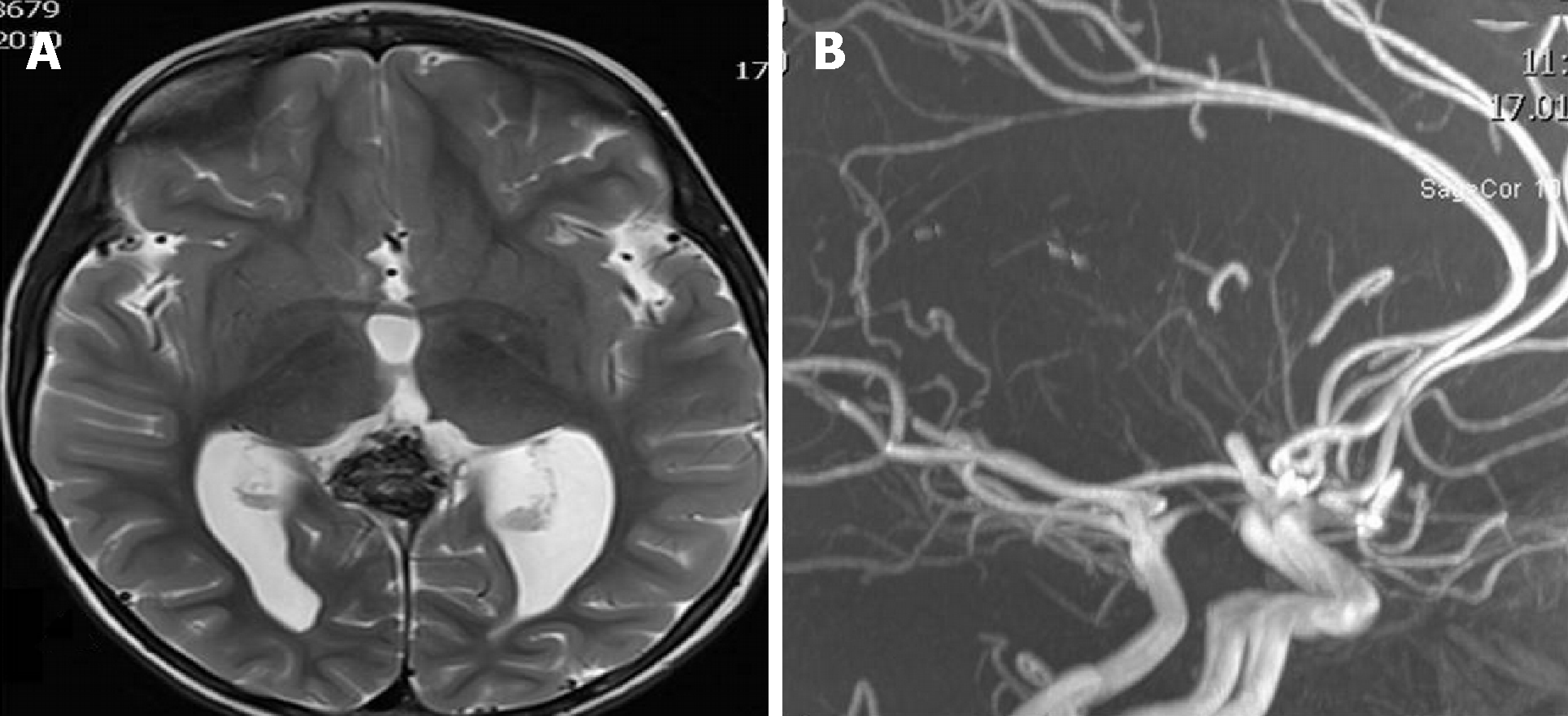Copyright
©The Author(s) 2019.
World J Clin Cases. Apr 6, 2019; 7(7): 855-862
Published online Apr 6, 2019. doi: 10.12998/wjcc.v7.i7.855
Published online Apr 6, 2019. doi: 10.12998/wjcc.v7.i7.855
Figure 1 Imaging examinations of patient 1.
A: Chest x-ray with cardiomegaly. The arrows indicate the outlines of cardiac silhouette; B-E: The MRI showing a 22 mm x 14 mm choroidal VGAM (red arrow pointing on the malformation). The scale indicates 2 cm; F: Angiography showing the feeders originating from the posterior choroidal and pericallosal arteries (red arrows) with the characteristic persistent limbic ring (black arrows). The scale indicates 1 cm; G-I: The partially occluded VGAM after an endovascular transarterial embolization with coils, which are visible in the malformation; J-L: A control MRI 15 mo after treatment. Almost complete thrombosis of the VGAM (J and K) with a good venous drainage (arrows) toward the sagittal, transverse and sigmoid sinuses may be seen (L).
Figure 2 Imaging examinations of patient 2.
A: The chest x-ray showing dilatation of the right heart (red arrows indicate the heart silhouette) and lung oedema (white spots in the lung parenchima); B,C: The MRI showing a 35 mm × 45 mm VGAM (thick arrow) with main feeders arising from both posterior cerebral arteries, posterior communicating arteries, anterior choroidal arteries and callosomarginal arteries (thin arrows). The VGAM drains into a persistent falcine sinus (white arrow) (C). The scale indicates 1 cm; D, E: A control MRI one year after treatment. No residual flow through the VGAM can be seen.
Figure 3 Imaging examinations of patient 3.
A: The MR angiography one year after treatment showed mild ventricular dilatation, especially of the left occipital horn; B: No residual flow in the VGAM is seen. The VGAM was occluded completely.
- Citation: Spazzapan P, Milosevic Z, Velnar T. Vein of Galen aneurismal malformations - clinical characteristics, treatment and presentation: Three cases report. World J Clin Cases 2019; 7(7): 855-862
- URL: https://www.wjgnet.com/2307-8960/full/v7/i7/855.htm
- DOI: https://dx.doi.org/10.12998/wjcc.v7.i7.855











